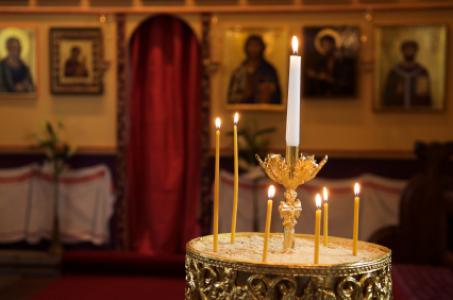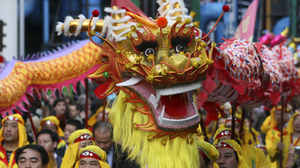
Best Comet of 2025?
C/2024 G3 (ATLAS) has already become very faintly visible to the naked eye for observers in the Southern Hemisphere.
Nunavut Day, which is annually celebrated on July 9, commemorates passing of two Nunavut acts. The Canadian Parliament passed the Nunavut Land Claims Agreement Act and the Nunavut Act on July 9, 1993. Nunavut officially split from the Northwest Territories and became a Canadian territory on April 1, 1999.
Nunavut Day is a public holiday in Nunavut, where it is a day off for the general population, and schools and most businesses are closed.

Nunavut Day marks an important part of Nunavut Territory's history in Canada.
©iStockphoto.com/Shaun Lowe
Many events are arranged on Nunavut Day. These include:
The Nunavut Day Cultural and Academic Grants winners are also announced on this day. These grants are awarded to Nunavut residents to enable them to pursue academic studies or to increase their levels of traditional skills.
Nunavut Day is a public holiday in Nunavut and government offices are closed. Many stores and other organizations may be closed. Nunavut Day is not a public holiday holiday in other parts of Canada.
The Northwest Territories were originally created in 1870. At that time, they covered a huge area and included parts of the modern provinces of Alberta, Manitoba, Ontario, Quebec and Saskatchewan and the Territory of Yukon. In 1976, the Inuit Tapiriit Kanatami were involved in land claim negotiations with the Canadian Government during which the division of the Northwest Territories was discussed. On April 14, 1982, many residents voted for this division in a plebiscite (referendum).
On April 1, 1999, Nunavut officially split from the Northwest Territories and this date and its anniversary in 2000 became known as Nunavut Day. However, April 1 did not have any real meaning for the people of Nunavut. Nunavut Day celebrations were moved to July 9 in 2001 and have remained on that date since then.
An important symbol of Nunavut Territory is a blue and white image of a polar bear on an iceberg with a single star in the sky. The star represents the North Star and the leadership of elders in the community. The lower part of the image includes the word "Nunavut" and its equivalent in Inuktitut syllabics, one of the writing systems used to represent the Inuktitut language spoken by many Inuit communities in Nunavut. This image is widely used in the Nunavut Government's documents.
Nunavut's coat of arms is based on a circular shield split in two by a horizontal line representing the horizon. The top part of the shield is blue (the sky) and includes images of a golden five pointed star (the North Star) and an arc of five golden circles (the Sun in general and the midnight sun in particular). The circle's lower part is golden and includes images of a blue inukshuk and a qulliq.
The inukshuk is an Inuit land marker constructed from five stones representing sacred places in the landscape. The qulliq is an Inuit stone lamp that represents light in the dark winter months and the warmth of the family and community. On top of the shield is an image of an iglu (igloo) representing the traditional way of life and a crown representing the connection of Nunavut with the monarch. The shield is supported by a caribou and a narwhal on a base composed of land, sea and ice.
The Nunavut flag is a rectangle that is divided into two halves vertically. The half closest to the flagpole is yellow and other half is white. On the white half there is a blue five pointed star that represents the North Star and the leadership of elders in the community. The halves are separated by a red inukshuk. Other symbols of Nunavut Territory include the Purple Saxifrage (territory flower), the Rock Ptarmigan (territory bird) and the words "Nunavut, Our Strength" in Inuktitut (territory motto).
| Year | Weekday | Date | Name | Holiday Type | Area |
|---|---|---|---|---|---|
| 2020 | 木曜日 | 7月9日 (木) | Nunavut Day | Local Holiday | Nunavut |
| 2021 | 金曜日 | 7月9日 (金) | Nunavut Day | Local Holiday | Nunavut |
| 2022 | 土曜日 | 7月9日 (土) | Nunavut Day | Local Holiday | Nunavut |
| 2023 | 日曜日 | 7月9日 (日) | Nunavut Day | Local Holiday | Nunavut |
| 2023 | 月曜日 | 7月10日 (月) | Nunavut Day observed | Local Holiday | Nunavut |
| 2024 | 火曜日 | 7月9日 (火) | Nunavut Day | Local Holiday | Nunavut |
| 2025 | 水曜日 | 7月9日 (水) | Nunavut Day | Local Holiday | Nunavut |
| 2026 | 木曜日 | 7月9日 (木) | Nunavut Day | Local Holiday | Nunavut |
| 2027 | 金曜日 | 7月9日 (金) | Nunavut Day | Local Holiday | Nunavut |
| 2028 | 日曜日 | 7月9日 (日) | Nunavut Day | Local Holiday | Nunavut |
| 2028 | 月曜日 | 7月10日 (月) | Nunavut Day observed | Local Holiday | Nunavut |
| 2029 | 月曜日 | 7月9日 (月) | Nunavut Day | Local Holiday | Nunavut |
| 2030 | 火曜日 | 7月9日 (火) | Nunavut Day | Local Holiday | Nunavut |
While we diligently research and update our holiday dates, some of the information in the table above may be preliminary. If you find an error, please let us know.

C/2024 G3 (ATLAS) has already become very faintly visible to the naked eye for observers in the Southern Hemisphere.

Many Orthodox Christian churches in countries such as Canada celebrate New Year’s Day on January 14 in the Gregorian calendar.

Isra and Mi'raj (Isra Me'raj, Israa and Mi'raaj, Laylat Al-Isra wa Al-Miraj, Lailat al Miraj, Night Journey and Ascension to Heaven) marks the night when the Prophet Mohammad traveled from Mecca to Jerusalem, ascended to heaven and returned.

Lunar New Year marks the first day of the New Year in the Chinese calendar.